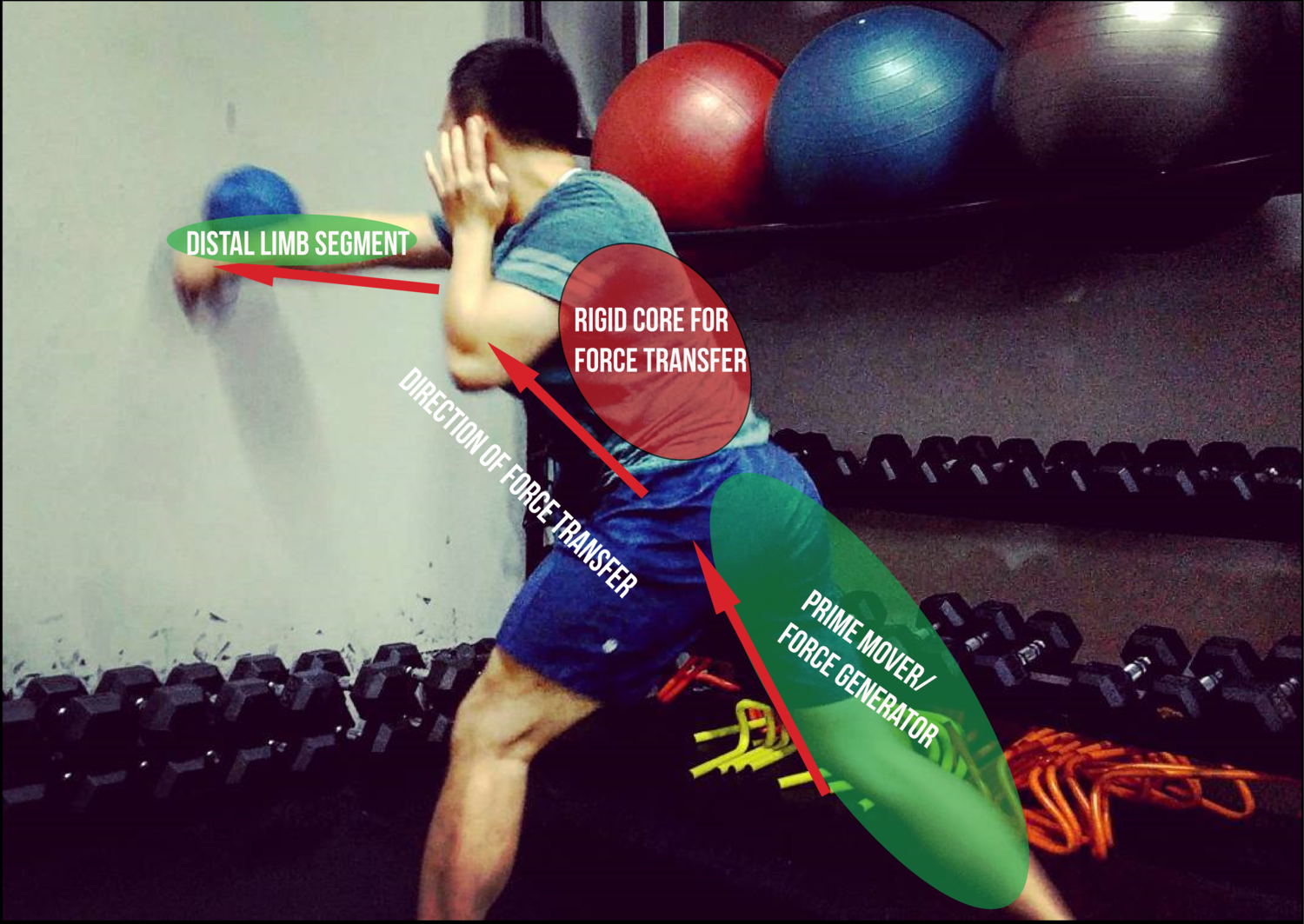Kenny Croxdale
Level 7 Valued Member
THE SCIENCE OF CORE TRAINING: CORE STIFFNESS & PERFORMANCE OVERVIEW (PART 1 OF CORE TRAINING SERIES)

 gcperformancetraining.com
gcperformancetraining.com
...the function of the core is to transmit force, prevent force/power leaks and maintain the position of certain joints and body segments. In the words of professional lower back and spine expert Stuart McGill, he describes the function of the core to "stiffen the torso to prevent motion, [and] enhance motion of the distal limb segments".
In the majority of sporting performances, the ability to accelerate distal limbs is the key to high power output: think about throwing a baseball, kicking a soccer ball, jumping, pushing, punching. Stiffening the torso to prevent excessive motion and enhances force production and power output because it acts as a medium for force transmission - ensuring all the force you generated is directed towards your intended direction. A floppy and weak midsection results in a weak kick, a weak throw, a weak jump and a weak landing.
Olympic Cyclist Vs. Toaster: Can He Power It?
Yes, the thigh musculature are still the primary movers, but the core/torso also contribute greatly, acting like a shock absorber to negate most of the horizontal and vertical bodyweight shifting that happens during high RPMs. A strong core ensures as much of the force generated by the prime movers can be directed towards spinning the pedal.
The principles of contract-relax-contract discussed above also apply to this example. The quadricep has to relax while the hamstring is active during the (pedal) upstroke, and vice versa during the downstroke.
Powerlifting is a maximal strength sport, meaning the velocity of distal limbs and the velocity of the bar is relatively low compared to other sports such as Olympic Lifting or various throwing sports. As a result, core stiffness plays a slightly different role - a slower isometric role. Although there is no contract-relax-contract cycle in powerlifting, the core still acts as a stopper for potential force leakages. The main role of the having a rigid torso/core is to support the lumbar and thoracic spine under heavy load.
In order to effectively transmit that power from foot to fist, the core must rigid.
...these types of movements (punches, kicks, hitting/impact-movements) exhibit a "double peak" in regards to muscle activity (measured through Electromyography (EMG)). In other words, whenever performing a powerful movement, the muscles will go through 3 phases: contract/stiffen, relax, and contract/stiffen once again upon impact, showing a "double" peak in activation... Stuart McGill et al. performed a study in 2010 on elite mixed martial artists(Georges St. Pierre, David Loiseau to name a few)...

The Science of Core Training: Core Stiffness & Performance Overview — GC Performance Training
This article will overview the concept of core stiffness and how it's applied to several sporting performances and movements. Core stiffness may refer to the core's ability to maintain stability in response to the influence of external forces, which may vary in magnitude, direction and speed.&nb
...the function of the core is to transmit force, prevent force/power leaks and maintain the position of certain joints and body segments. In the words of professional lower back and spine expert Stuart McGill, he describes the function of the core to "stiffen the torso to prevent motion, [and] enhance motion of the distal limb segments".
In the majority of sporting performances, the ability to accelerate distal limbs is the key to high power output: think about throwing a baseball, kicking a soccer ball, jumping, pushing, punching. Stiffening the torso to prevent excessive motion and enhances force production and power output because it acts as a medium for force transmission - ensuring all the force you generated is directed towards your intended direction. A floppy and weak midsection results in a weak kick, a weak throw, a weak jump and a weak landing.
Olympic Cyclist Vs. Toaster: Can He Power It?
Yes, the thigh musculature are still the primary movers, but the core/torso also contribute greatly, acting like a shock absorber to negate most of the horizontal and vertical bodyweight shifting that happens during high RPMs. A strong core ensures as much of the force generated by the prime movers can be directed towards spinning the pedal.
The principles of contract-relax-contract discussed above also apply to this example. The quadricep has to relax while the hamstring is active during the (pedal) upstroke, and vice versa during the downstroke.
Powerlifting is a maximal strength sport, meaning the velocity of distal limbs and the velocity of the bar is relatively low compared to other sports such as Olympic Lifting or various throwing sports. As a result, core stiffness plays a slightly different role - a slower isometric role. Although there is no contract-relax-contract cycle in powerlifting, the core still acts as a stopper for potential force leakages. The main role of the having a rigid torso/core is to support the lumbar and thoracic spine under heavy load.
THE PUNCH AND KICK IN MARTIAL ARTS
... the prime movers of the straight punch are actually the back leg, the muscles surrounding the hip and the shoulder girdle, NOT the arms. Power is generated by pushing off the back foot, contracting the glute, and directing that force into the distal limb segment (which is the fist in this scenario).In order to effectively transmit that power from foot to fist, the core must rigid.
...these types of movements (punches, kicks, hitting/impact-movements) exhibit a "double peak" in regards to muscle activity (measured through Electromyography (EMG)). In other words, whenever performing a powerful movement, the muscles will go through 3 phases: contract/stiffen, relax, and contract/stiffen once again upon impact, showing a "double" peak in activation... Stuart McGill et al. performed a study in 2010 on elite mixed martial artists(Georges St. Pierre, David Loiseau to name a few)...
Last edited:
